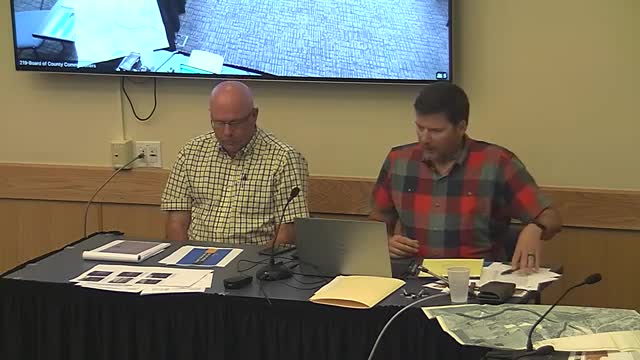FEMA updates flood maps after 40 years of neglect
August 28, 2024 | Klamath County, Oregon
This article was created by AI summarizing key points discussed. AI makes mistakes, so for full details and context, please refer to the video of the full meeting. Please report any errors so we can fix them. Report an error »

In a recent government meeting, officials discussed the critical need for updated flood insurance rate maps and floodplain ordinances, emphasizing the importance of modern technology in flood management. The current flood insurance rate maps, which date back to 1984, are based on outdated aerial survey methods. In contrast, contemporary mapping utilizes advanced lidar technology, allowing for more accurate ground contours and improved flood modeling.
The meeting highlighted that the revised floodplain ordinance aims to incorporate the latest FEMA maps, which reflect 40 years of storm data and urban development. Officials noted that the last comprehensive review of flood mapping occurred four decades ago, making the upcoming changes essential for effective flood risk management.
The discussion also touched on the implications of these updates for local residents. The floodplain maps are crucial for determining building standards and insurance eligibility, as they disclose whether properties are located within flood-prone areas. Officials acknowledged that many citizens lack the expertise to understand flood risks, underscoring the need for clear communication and guidance from FEMA.
Concerns were raised about the potential consequences of not adopting the updated maps, including the inability for residents to purchase flood insurance and the loss of federal funding for disaster recovery. The officials stressed that without these updates, the community could face significant financial and safety risks.
The meeting concluded with a commitment to move forward with the revised floodplain ordinance, aiming to enhance public safety and ensure that the community is better prepared for future flooding events.
The meeting highlighted that the revised floodplain ordinance aims to incorporate the latest FEMA maps, which reflect 40 years of storm data and urban development. Officials noted that the last comprehensive review of flood mapping occurred four decades ago, making the upcoming changes essential for effective flood risk management.
The discussion also touched on the implications of these updates for local residents. The floodplain maps are crucial for determining building standards and insurance eligibility, as they disclose whether properties are located within flood-prone areas. Officials acknowledged that many citizens lack the expertise to understand flood risks, underscoring the need for clear communication and guidance from FEMA.
Concerns were raised about the potential consequences of not adopting the updated maps, including the inability for residents to purchase flood insurance and the loss of federal funding for disaster recovery. The officials stressed that without these updates, the community could face significant financial and safety risks.
The meeting concluded with a commitment to move forward with the revised floodplain ordinance, aiming to enhance public safety and ensure that the community is better prepared for future flooding events.
View full meeting
This article is based on a recent meeting—watch the full video and explore the complete transcript for deeper insights into the discussion.
View full meeting
